This article was written in response to the Coronavirus pandemic in Spring 2020 and published on Hackernoon.
…
The world is gripped by the collective anxiety proliferated by live death-count dashboards, exponential charts, and frightening headlines that promise the imminent apocalypse.
The real extent of the problem, however, is not really known. The decisions are made based on incomplete data. Worst-case scenarios are used to implement social and economic policies without a proper discussion or long-term implications assessment.
The Singularity that we’ve been talking about all these years has finally arrived. The AI has taken over. And it did so in a form that was much less violent that we could have ever predicted. Even benevolent, in some ways.
There are no robots on the streets killing people. On the opposite: Trump is promising universal basic income to everyone, Netflix’s traffic is surging, and the internet is bustling with broadcasts from voluntary prison cells. The revolution did not come in the form of SkyNet, but, rather, of Matrix. And it was not imposed but, surprisingly, self-inflicted.
The digital totalitarian capitalism has arrived. It exploited that one vulnerability that every human being has: fear of death… and self-reinforcing feedback loops.
…
1. Feedback Loops are Scarier Than Exponentials
In the last few days, the amount of time spent looking at exponentials has gone exponential.
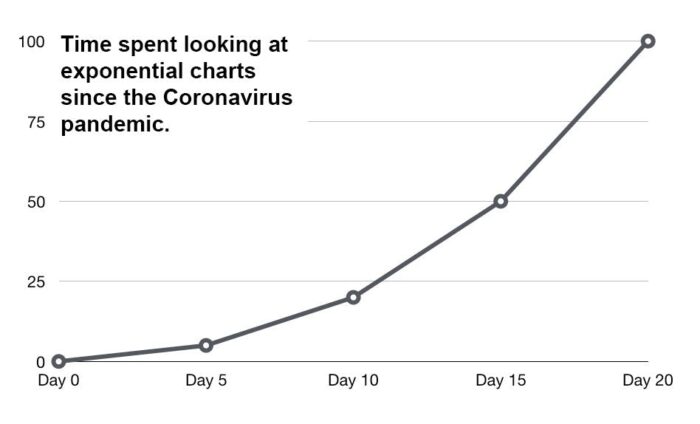
So now that everyone is interested in the dynamics of non-linear processes it may be interesting to look into feedback loops.
A self-reinforcing feedback loop is a process of interaction. In its most basic shape, an output from one part is sent as an input to another part, which, in turn, amplifies its output, and so on — into infinity (or until the collapse).
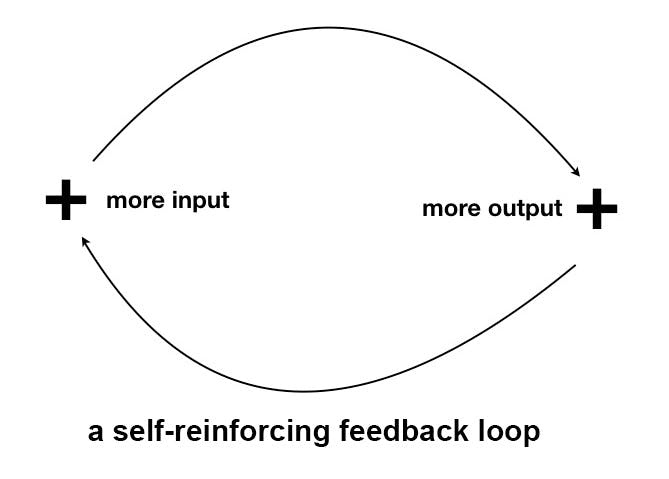
Now, let’s apply this model to current events.
The biggest push came from Italy, which reported a record number of deaths: 10 000 as of today (28/03) for the last month.
More than double that number of people died in Italy of the seasonal flu in 2016/2017. About 1500 people die there every day thereof other causes, which are much more dangerous to society (smoking, driving, etc.)
However, in 2020, it’s not human beings driving the dissemination of content, but neural network algorithms. That’s how these deaths came into the spotlight.
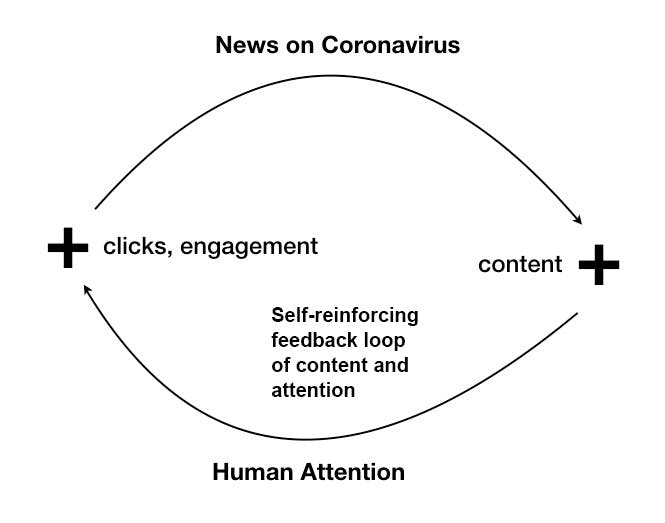
It is a well-known fact that when you look at any website today you are participating in an A/B test: being shown two or more different versions of the same page. The neural network behind is “learning” what kind of content (and headlines) will generate more value (ad clicks, engagement, subscriptions). Obviously, in a context like that a headline that says “3000 People Died Today, More is Coming” is much more interesting than anything else. As a result, this content gets generated and attracts even more attention.
Not only these headlines are preferred by neural networks, they also get proliferated by social network algorithms much faster. The more “Likes” something gets, the faster it spreads.
There we have our feedback loop:
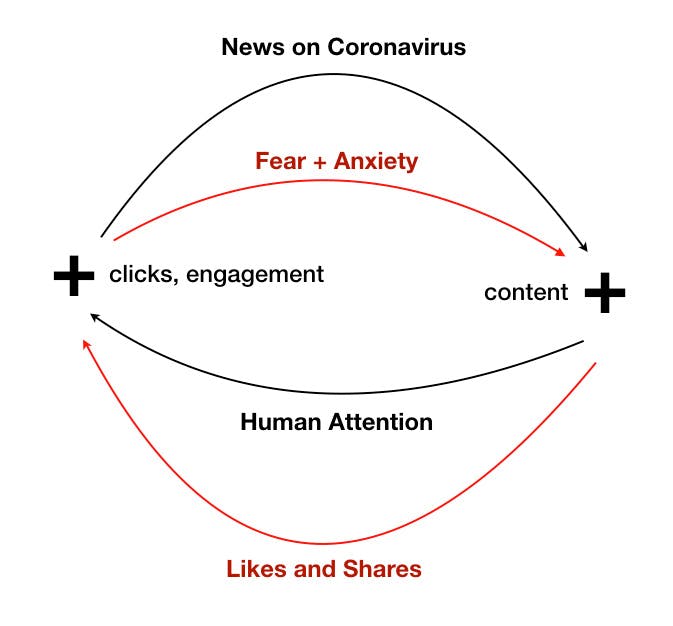
This type of feedback loop is called self-reinforcing. The more attention it gets, the stronger it’s going to be, the faster it’s going to spread. Better than any virus.
But that alone would not be enough. Governments use social media monitoring tools to guide their actions. That’s why they missed out on China (nobody was talking about this) and that’s why they overreacted on Italy. Instead of testing everyone in order to get reliable data and know the true extent of the problem, they introduced draconian measures that were totally disproportionate to the levels of risk posed by the situation. This, in turn, made people believe even stronger that something horrible was happening, reinforcing the loop even further:
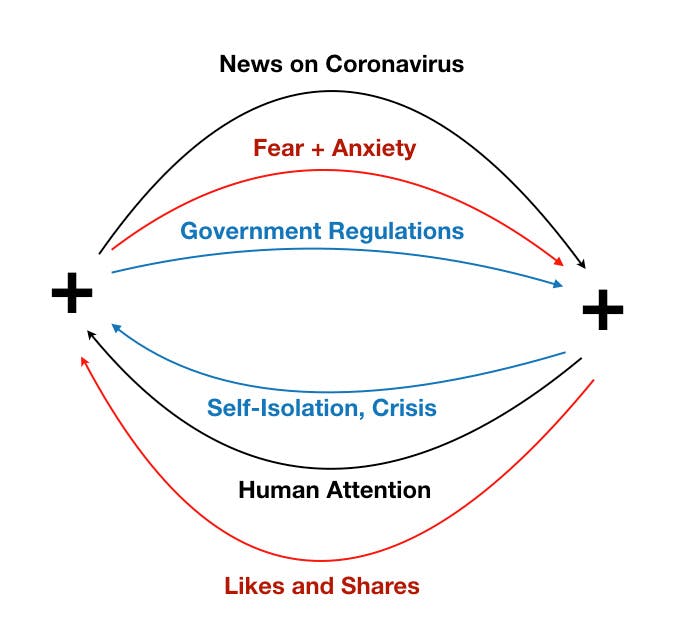
The fusion of human behavior, fear, neural networks, recommendation algorithms, and incompetent governmental responses has manufactured the current state of panic we find ourselves in.
…
2. Exploiting the Vulnerability
It is already clear that we are moving towards a global crisis. Something that we’ve been talking about for years is finally taking shape.
It is also clear that the political and social implications of the response to this crisis will produce a new kind of system based on digitalized totalitarian capitalism.
Humanity is kind of done the moment it asks the government to lock itself up. The moment it accepts that police uses whips and rubber bullets to maintain social distancing. The moment it muses at the beauty of the Italian language watching the videos of elected local officials threatening citizens with prison terms for going outside. Not even the Black Mirror could ever imagine that in 2020 you’d have to show an app (green or red) and have your temperature measured to enter a public place or to cross a border (the social rating episode pales in comparison, Foucault with his biopolitics is smoking nervously somewhere at a safe distance). Leave alone the police drones flying around in Spain and France “shaming” people into going back home and imprisoning people who are just going outside to get some fresh air.
Just for a minute: let us not forget that this is not the Third World War and it is not a plague that kills 50% of people. It’s not even the 9/11 (although in retrospect it will look a lot like that thanks to all the draconian laws ushered through). We are simply talking about an extrapolation based on incomplete data and the number of deaths that pales in comparison to the number of people dying because of car crashes or cigarettes every day.
Why was it so easy to give up?
What was the vulnerability exploited by this virus?
People don’t like to think of death. They are afraid of it.
The Silicon Valley moguls think that death is a disease to get rid of. In the absence of religion, there is no other framework to help people deal with the fact that they going to die, so they simply shove this under the carpet into the deepest crevices of the unconscious. And, by doing so, they create their biggest vulnerability that emerges as soon as there is the slightest threat to their existence.
That vulnerability comes with a side effect. The warriors who carry the flag of responsibility. “I’m not doing it for myself, I’m doing it for the others.”
So it is not only about obediently submitting to the authority. It is also about passing on and imposing this authority onto others: #staythefuckhome
(Just read all the comments to the YouTube video of the Indian police beating the people up with sticks for being outside: most of the people endorse it).
…
3. Self-Fulfilling Prophecies and the Nocebo Effect
Coming back to the feedback loops, we also need to talk about the self-fulfilling prophecies.
You may have a healthy dose of skepticism towards the fact that thoughts do materialise, but even the most scientific mind knows about the placebo effect.
Every medical study has to take this into account: if a human being believes that something is good for them, they are more likely to get cured than if they don’t. That’s why every new medical trial has a control and a placebo group: because placebo works. It is a type of self-fulfilling prophecy that has a concrete effect proven by science.
Just like there is the placebo effect, there’s also the nocebo effect: a negative self-fulfilling prophecy. The more you believe that something is going to go bad, the more likely it is to happen.
It has already been demonstrated that an elevated level of anxiety weakens the immune system. The true strength of this virus is its ability to sow anxiety and fear in people.
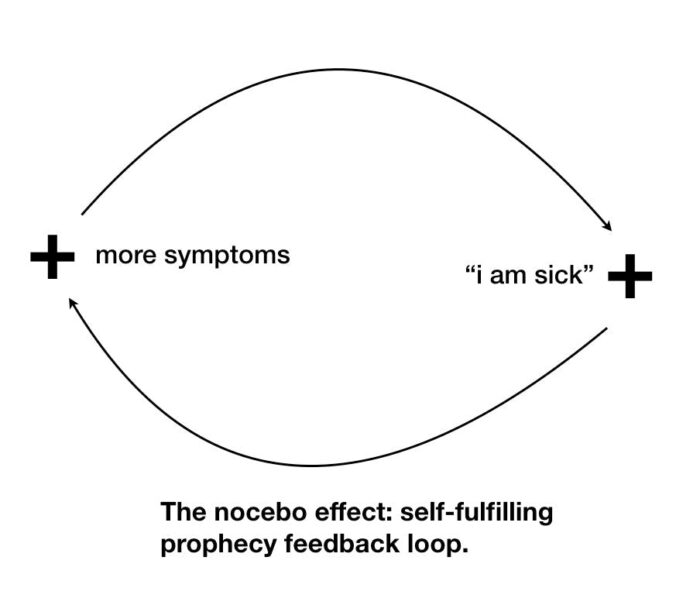
You do not even need any 5G conspiracies: fear is a much more effective weapon than any gigahertz radiation for your immune system. Make somebody anxious and afraid and you will weaken their immune system, thus, rendering them more vulnerable to the virus, even if they don’t fall into the vulnerable risk group.
That’s why, when we are talking about fighting the pandemic, we should consider that, perhaps, the battle ground is also within our own heads.
How do we interact with and share information?
What do we give our attention to?
How do we help proliferate fear and anxiety?
What can we do to stop?
Gregory Bateson, a well-known anthropologist, studied the feedback loops in the context of psychotherapy. His best recipe was to detect the type of feedback loop and to disrupt the flow. To not escalate in response to the escalation, but to, rather, de-escalate and let go. Perhaps a counter-intuitive advice, but probably the most powerful response to any self-reinforcing feedback loop.
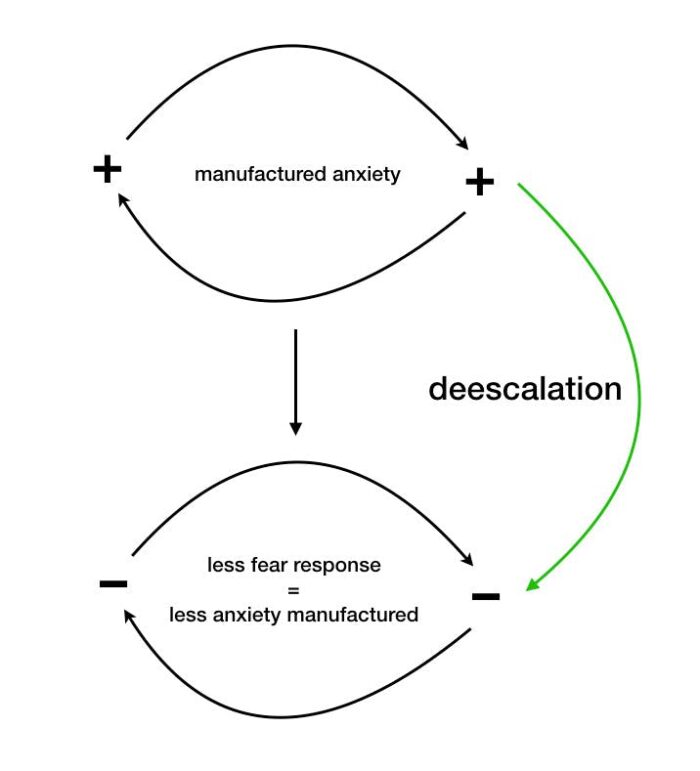
This article was also published on Hackernoon in 2020.



